
5 SaaS Growth Strategies That Work (Based On Analysis Of 15 Top AI Tools)
We analyzed ChatGPT, Claude, Perplexity, and 12 other leading AI tools to uncover monetization patterns driving their explosive growth.
The AI boom isn’t just about better technology; it’s about smarter growth strategies. While everyone’s talking about features and capabilities, there is another, equally compelling story that lies in how these tools convert free users into paying customers at unprecedented rates.
We dove deep into the user experiences of 15 top AI tools, documenting over 100 monetization touchpoints, upgrade pathways, and conversion tactics. What we found were five distinct patterns that drive revenue for these leaders.
These strategies aren’t just for AI. They’re blueprints that any SaaS tool can adapt to accelerate its own growth. Here’s what we learned.
The data behind the patterns
Our analysis covered tools spanning text generation (ChatGPT, Claude), search (Perplexity), design (Ideogram, Leonardo.AI), video creation (Runway), and productivity (Grammarly, QuillBot). Each tool was examined across four critical areas:
- Monetization elements: Upgrade CTAs, limit notifications, premium feature gates, and more
- Monetization pathways: The specific user journeys from free to paid
- Pricing and payment screens: Where users actually convert when they decide to upgrade
- Missed opportunities: Places where tools could be driving more conversions
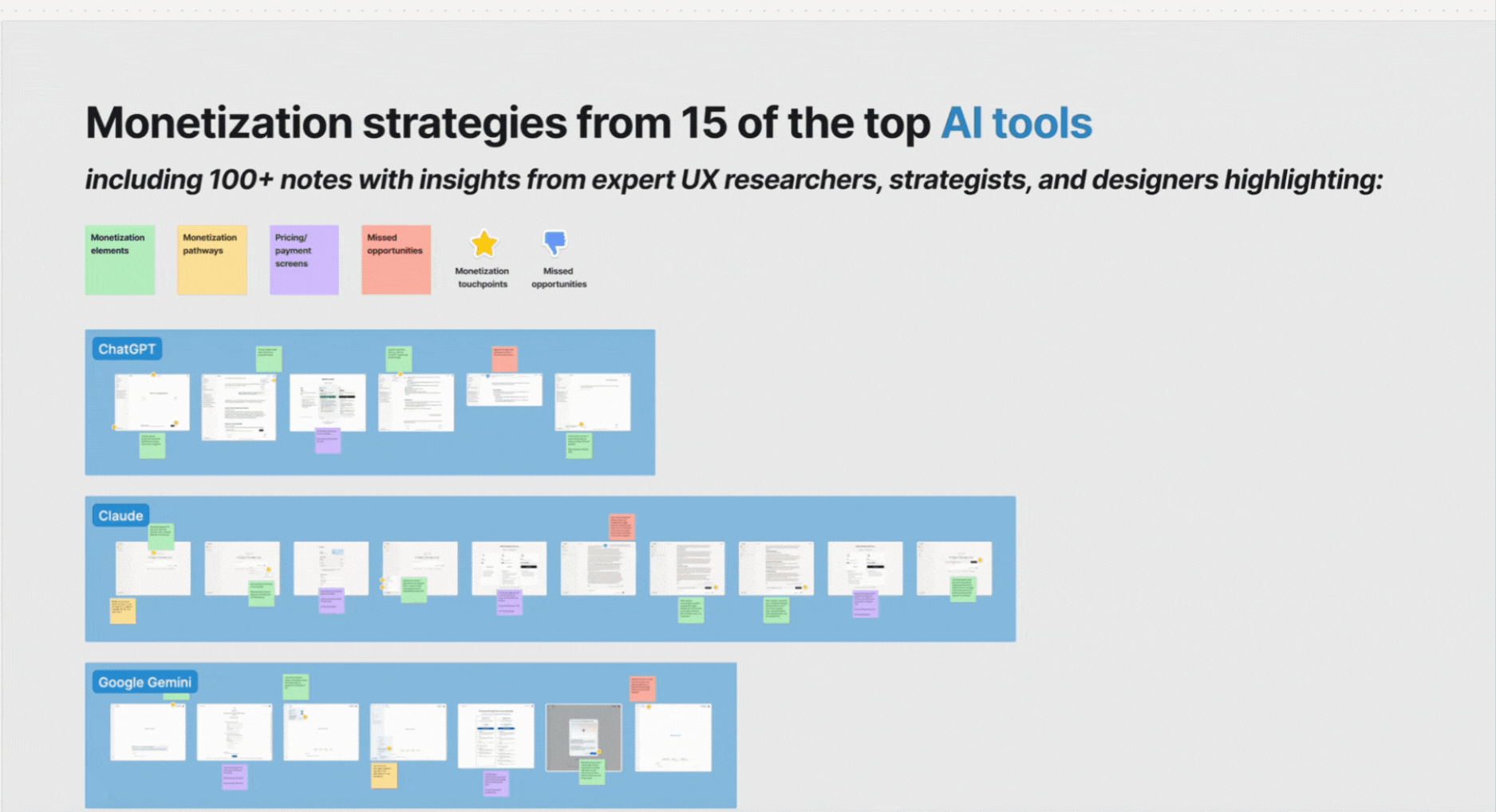
What emerged were five clear patterns that high-converting tools use consistently.
Pattern #1: The progressive squeeze
The strategy: Start with subtle hints, then gradually increase conversion prompts as users become more invested.
Who’s doing it: Claude, ChatGPT, and Perplexity have mastered this approach.
How it works: These tools begin with gentle upgrade suggestions embedded in the interface. A small CTA in the sidebar, a mention of plan limits in account settings. As users engage more, the messaging becomes increasingly direct.
Claude exemplifies this perfectly. New users see a subtle “Free plan” indicator and a small upgrade CTA. After several conversations, users get friendly notifications about approaching limits. Only when limits are actually hit does Claude present the strong upgrade push with clear urgency messaging.
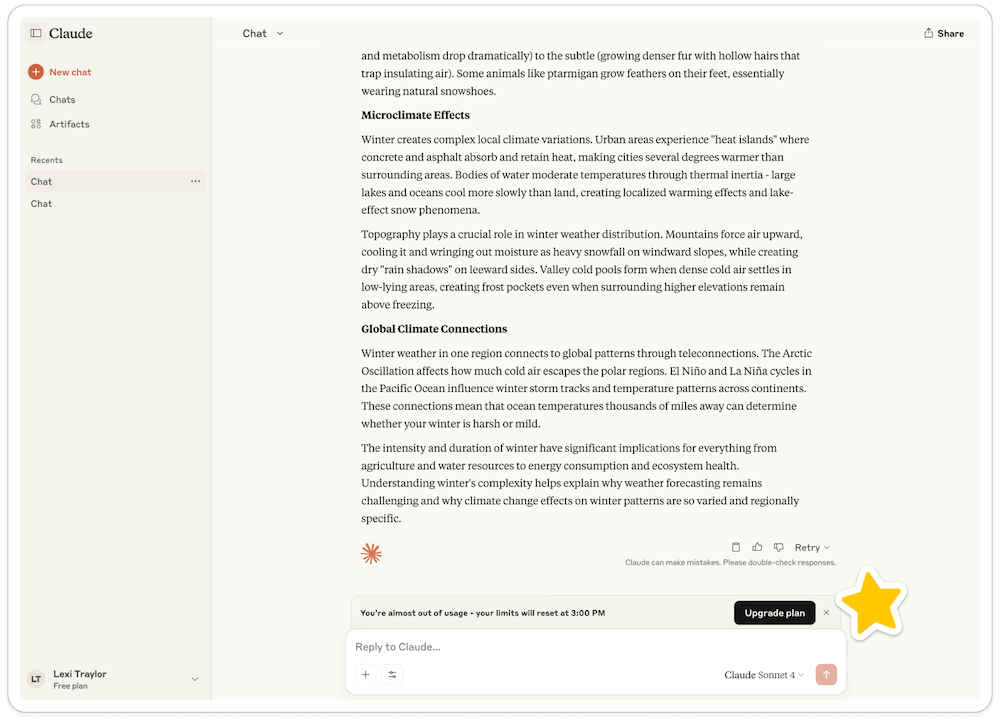
ChatGPT follows a similar pattern but with more touchpoints. Multiple upgrade opportunities appear once logged in, but the real conversion push happens when users try to upload files or access advanced features.
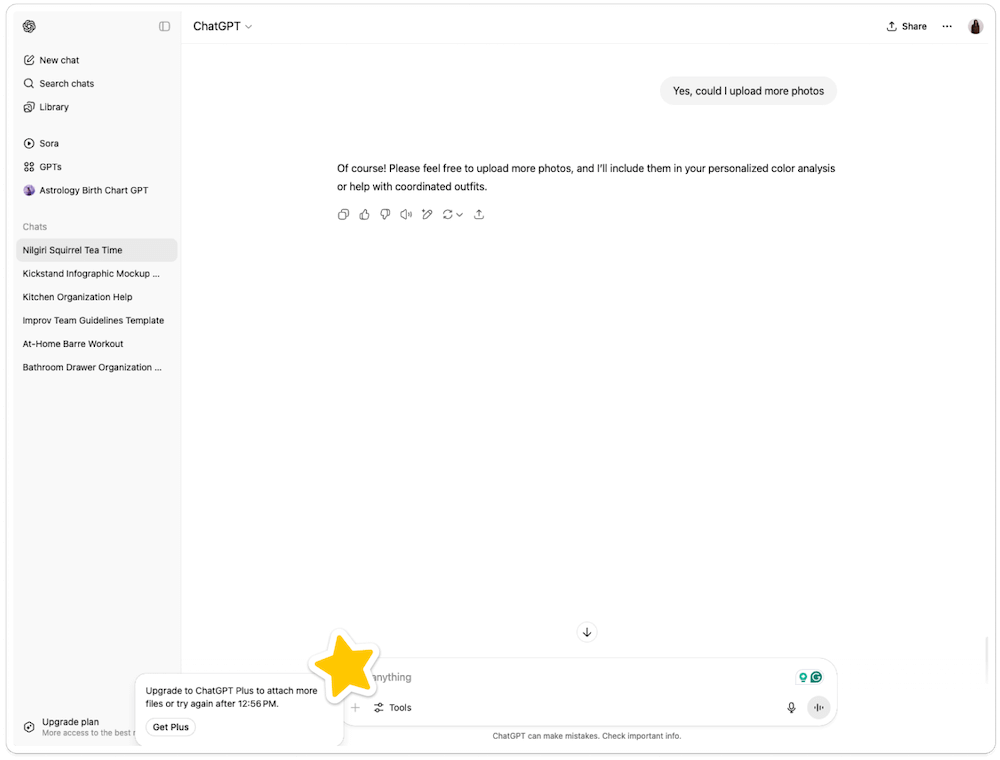
Why it converts: Users invest time and mental energy before hitting any hard walls. By the time they reach limits, they’re already committed to the tool and see clear value in upgrading rather than switching to alternatives.
The missed opportunity: Many tools go straight to hard limits without the progressive buildup, losing users who might have converted with a gentler approach.
How Top AI Tools Turn Free Users Into Paying Customers
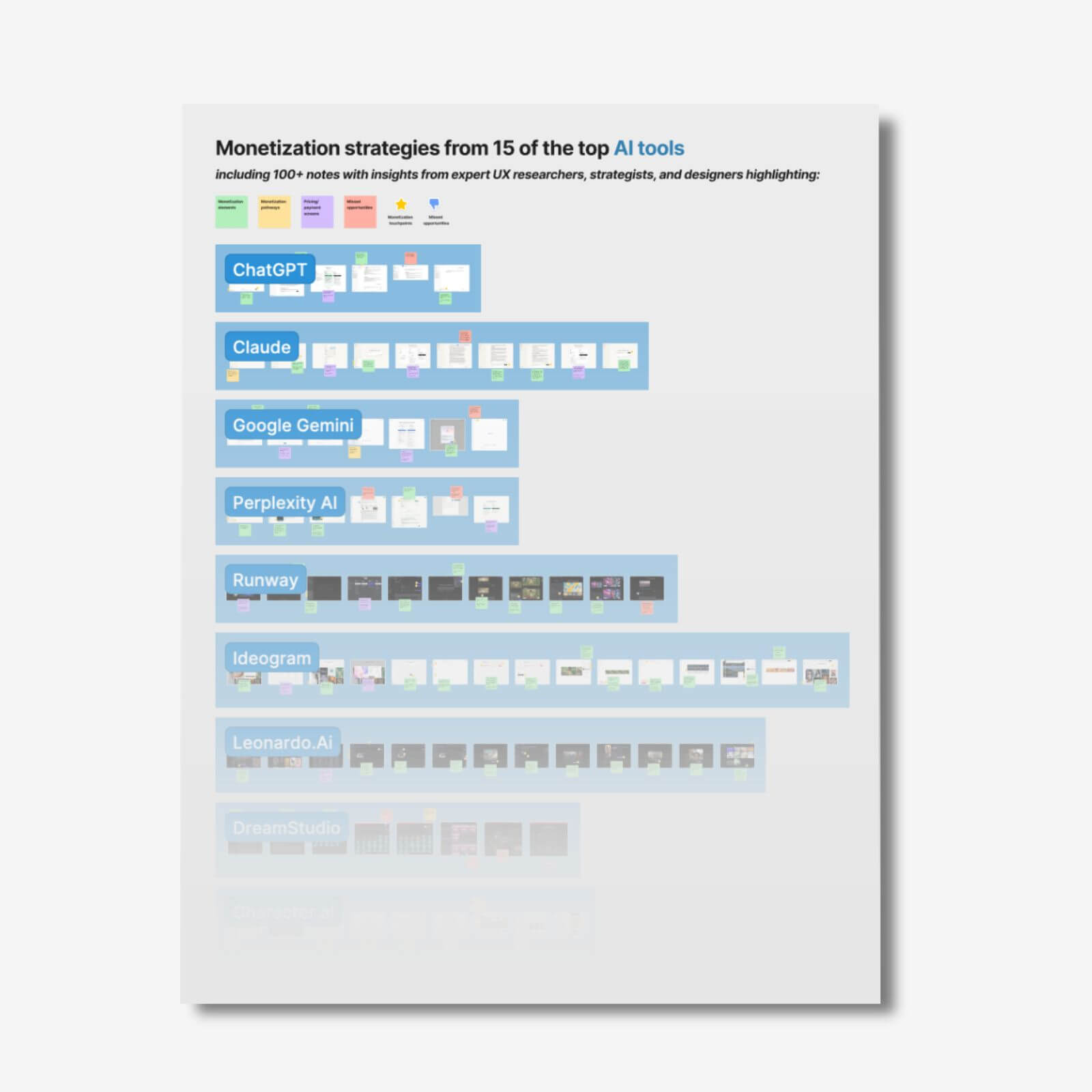
Pattern #2: The feature tease
The strategy: Show users exactly what they’re missing by displaying premium features prominently, then gating access.
Who’s doing it: Ideogram, Grammarly, and Leonardo.AI excel at this approach.
How it works: These tools don’t hide their premium features. Instead, they showcase them prominently with visual cues like lock icons, blurred previews, or “Pro” badges. Users can see the feature, understand its value, and often interact with locked elements that trigger upgrade modals.
Ideogram shows locked features upfront on the dashboard, displays private galleries as gated sections, and lets users click through to see upgrade benefits. When users generate images, editing options appear with clear visual indicators of which features require upgrading.
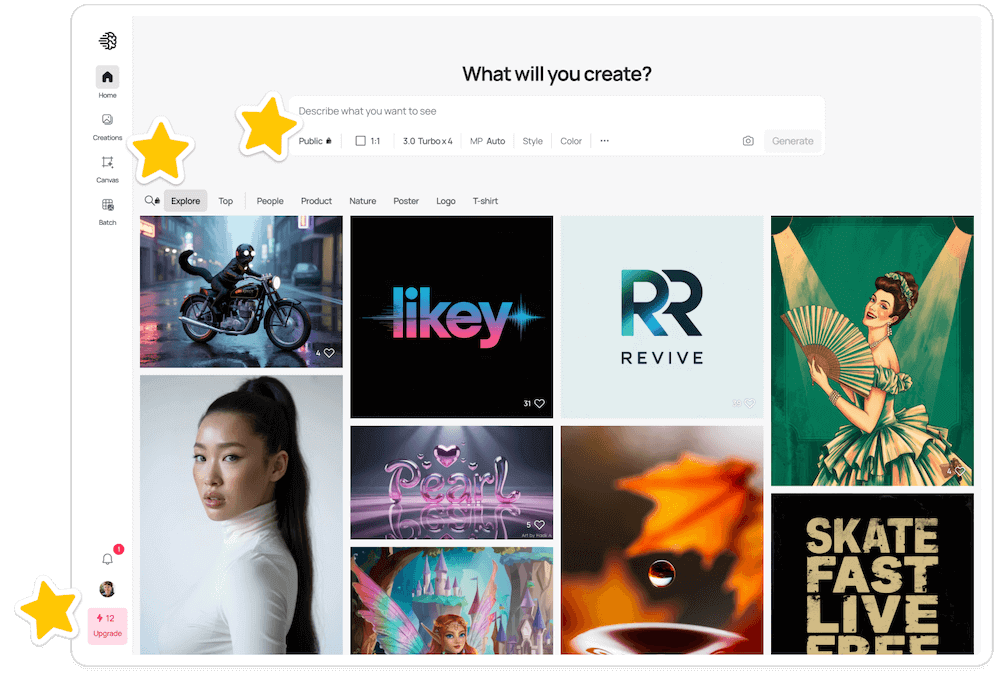
Grammarly shows blurred premium suggestions alongside free ones, lets users see statistics with tone analysis grayed out, and provides partial feature previews that create curiosity about the full experience.

Why it converts: Curiosity combined with FOMO creates powerful motivation. When users can see exactly what they’re missing and how it would solve their problems, the upgrade decision becomes much easier.
Implementation tip: The key is showing enough value to create desire while maintaining a clear visual hierarchy between free and premium features.
Pattern #3: The moment of need
The strategy: Present upgrade options precisely when users are most invested and would benefit most from premium features.
Who’s doing it: Runway, QuillBot, and Character.AI time their conversion prompts perfectly.
How it works: Instead of generic upgrade CTAs, these tools interrupt workflows at strategic moments when users are actively trying to accomplish something and would most benefit from premium features.
Runway waits until users want to export in 4K resolution or remove watermarks, both of which are moments when they’re already committed to using the generated content.
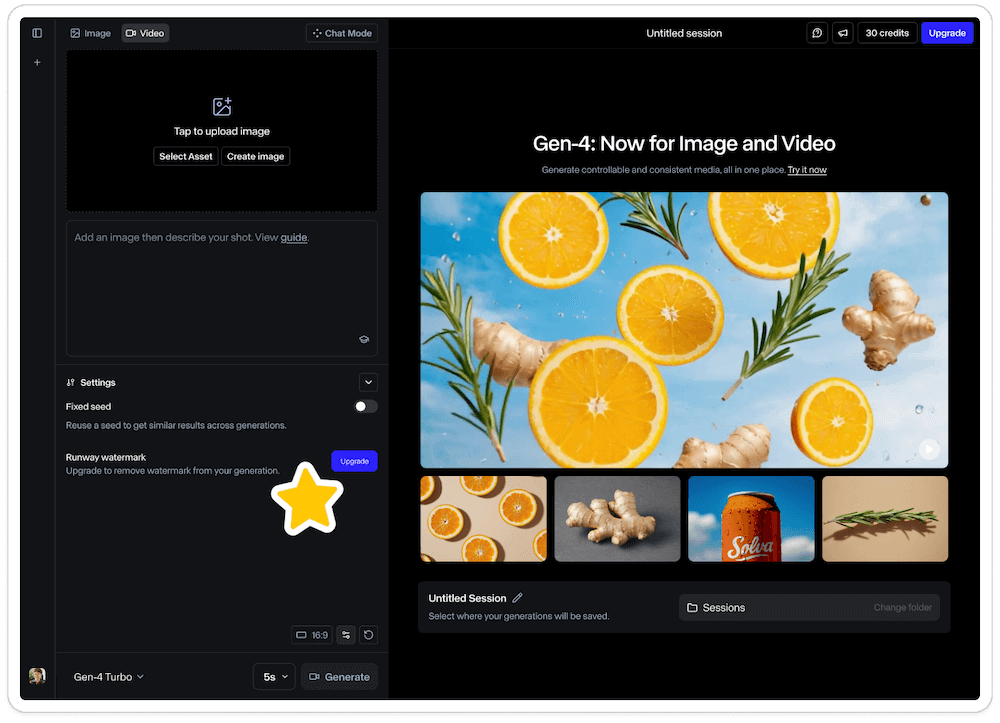
QuillBot triggers upgrade prompts when users hit word limits mid-task, not during idle browsing.
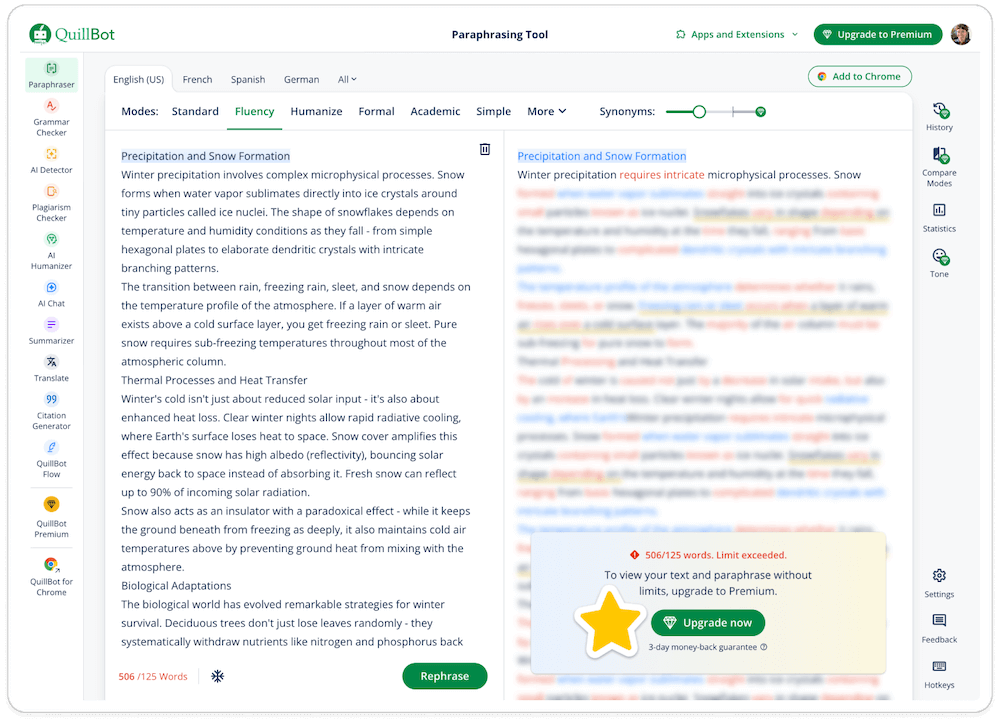
Why it converts: Perfect timing equals the highest conversion rates. When users are already invested in a task and premium features would immediately solve their problem, the upgrade becomes a logical next step rather than an interruption.
The psychology: This taps into the completion bias. Once users start a task, they’re motivated to finish it, making them more likely to pay to remove obstacles.
Pattern #4: The transparent countdown
The strategy: Create urgency and build trust by clearly showing usage limits, remaining credits, and reset timers.
Who’s doing it: Perplexity, Grammarly, and Copy.AI have perfected transparent limit communication.
How it works: Instead of surprising users with sudden limits, these tools constantly communicate remaining usage through progress bars, countdown timers, and clear messaging about when limits reset.
Perplexity shows “2 queries remaining today” with each search, giving users clear visibility into their usage without anxiety.

Grammarly displays credit counts and refill timers for AI features, so users can plan their usage accordingly.
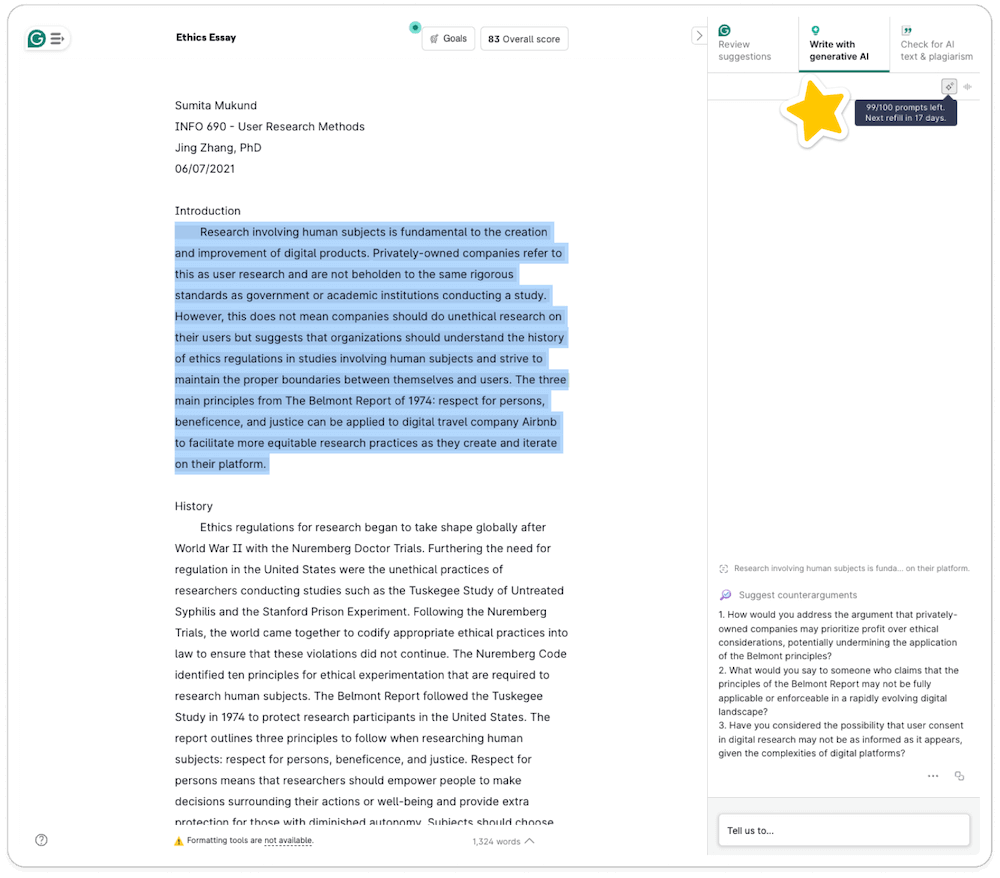
Copy.AI uses a prominent word count progress bar that updates in real-time, showing exactly how much of their monthly limit has been used.
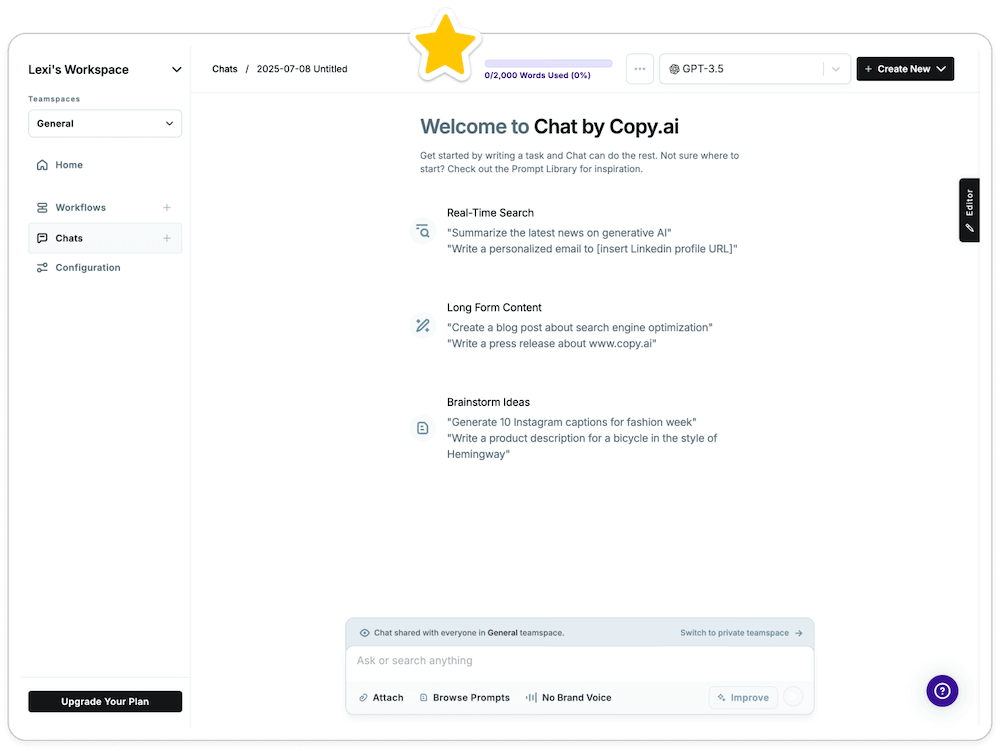
Why it converts: Transparency builds trust while creating healthy urgency. Users appreciate knowing where they stand and can make informed decisions about when to upgrade rather than feeling tricked by hidden limits.
The trust factor: When users trust that limits are fair and clearly communicated, they’re more likely to see upgrading as a reasonable business transaction rather than being forced into paying.
Pattern #5: The omnipresent nudge
The strategy: Place multiple upgrade touchpoints throughout the interface without being intrusive.
Who’s doing it: ChatGPT, QuillBot, and Ideogram have mastered multi-touchpoint conversion.
How it works: These tools strategically place upgrade opportunities at different points in the user journey, including header CTAs, sidebar reminders, settings page options, and feature-specific prompts. The key is making each touchpoint feel contextual rather than repetitive.
ChatGPT places upgrade CTAs in the dropdown menu, file upload tooltips, model selection interfaces, and account settings. Each serves a different user intent and provides value beyond just asking for payment.
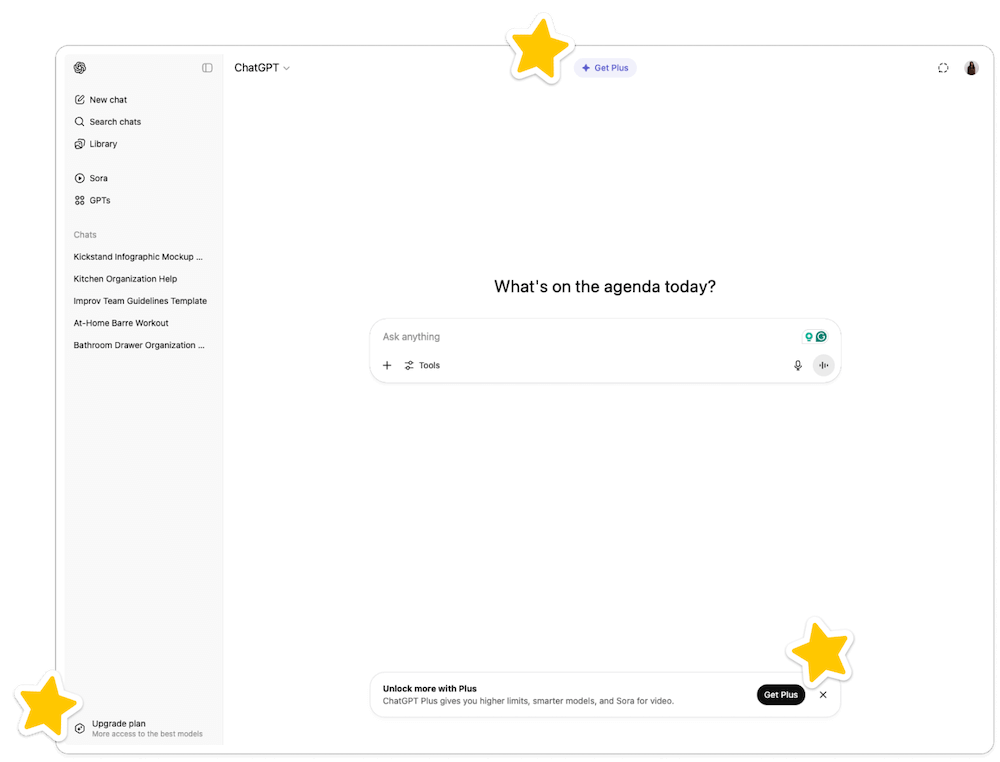
QuillBot integrates upgrade opportunities into the workflow, for example, in premium mode selectors, feature benefit explanations, and contextual prompts that feel helpful rather than pushy.
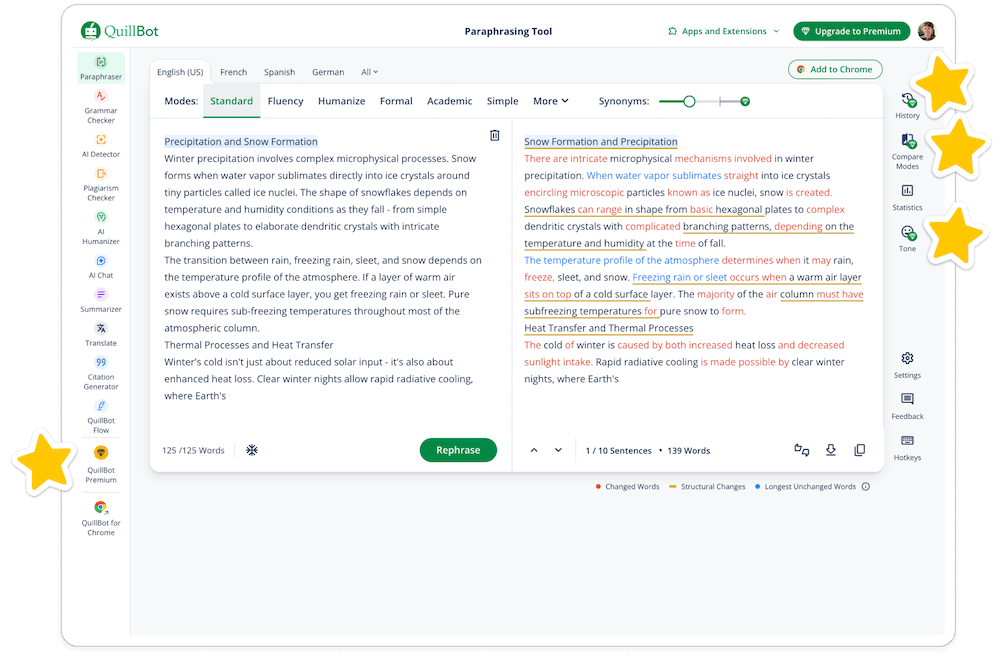
Why it converts: Repetition without annoyance increases recall and provides multiple chances to convert users at different readiness levels. Some users need to see upgrade options multiple times before they’re ready to act.
The balance: The key is ensuring each touchpoint provides value or information, rather than simply asking for money repeatedly.
The standout performers
While all 15 tools showed growth-focused design, three stood out for their sophisticated monetization strategies:
Claude excels at the Progressive Squeeze, building user investment before presenting upgrade opportunities. Their limit messaging feels helpful rather than restrictive, and the upgrade pathway is seamless.
Ideogram masters the Feature Tease, showcasing premium capabilities so effectively that users understand the upgrade value before reaching any limits. Their visual hierarchy makes premium features aspirational rather than frustrating.
Perplexity nails the Transparent Countdown, creating urgency without anxiety through clear limit communication and value-focused messaging.
Common missed opportunities
Our analysis revealed several patterns where even successful tools leave money on the table:
- Timing failures: Many tools show upgrade prompts during onboarding when users haven’t yet experienced value, rather than waiting for engagement.
- Value communication gaps: Some tools gate features without clearly explaining the benefits, leading to confusion rather than desire.
- Conversion pathway friction: Several tools send users to generic pricing pages rather than contextual upgrade flows that maintain momentum.
- Limit surprises: Tools that suddenly cut off functionality without warning create frustration rather than conversion motivation.
Applying these patterns to your SaaS growth strategies
These AI growth strategies aren’t limited to AI tools. The underlying principles work for any SaaS looking to improve free-to-paid conversion:
Start with your user journey mapping
Identify key moments where users experience value and where they encounter limitations. These are your conversion opportunity points.
Audit your current upgrade messaging
Are you using the Progressive Squeeze, or do you jump straight to hard limits? Are you showing users what they’re missing with Feature Teasing?
Review your limit of communication
Do users understand their usage limits, and when they reset? Transparent Countdown reduces churn and builds trust.
Optimize your touchpoint strategy
Map where upgrade CTAs appear in your interface and ensure each serves a specific user need rather than just asking for payment.
Test your conversion timing
Are you presenting upgrade options when users are most invested (Moment of Need) or just when it’s convenient for your UI?
What does this mean for your growth strategy?
AI tools are teaching us that successful monetization isn’t always about restricting features; it can be about showcasing value, building trust, and timing conversion opportunities perfectly. The tools growing fastest aren’t necessarily those with the best AI models, but those with the smartest user experience design.
These patterns work because they align business needs with user psychology. Instead of seeing limits as barriers, users experience them as natural progression points toward greater value.
The AI boom provides a unique laboratory for studying growth tactics at scale. These tools process millions of users and can iterate rapidly, revealing what actually drives conversions versus what we think should work.
As AI capabilities become more commoditized, user experience (including monetization design) becomes the key differentiator. The tools implementing these patterns now are building sustainable competitive advantages that will persist even as the underlying technology evolves.
Taking action on these insights
The most successful SaaS companies will adapt these AI growth strategies to their own products before their competitors catch on. Start by analyzing your current monetization approach against these five patterns:
- Map your user journey to identify Progressive Squeeze opportunities
- Audit your feature visibility to implement Feature Teasing where appropriate
- Review your limit of communication to adopt Transparent Countdown principles
- Time your conversion prompts to leverage the Moment of Need psychology
- Optimize your touchpoint strategy using Omnipresent Nudge best practices
The data from these 15 AI tools provides a roadmap, but implementation requires careful testing and optimization for your specific user base and value proposition.
Ready to apply these AI growth strategies to accelerate your SaaS growth? The Good specializes in analyzing user experiences and implementing conversion optimization strategies that turn insights into revenue. Our team has helped dozens of SaaS companies optimize their monetization flows using data-driven approaches just like this analysis.
Get your personalized monetization strategy audit. We’ll analyze your current user experience against these proven patterns and create a prioritized optimization roadmap tailored to your product and audience. Schedule a consultation with our team to discover how these AI growth strategies can accelerate your revenue growth.
How Top AI Tools Turn Free Users Into Paying Customers


About the Author
Lexi Traylor
Lexi Traylor is the Digital Designer at The Good. She collaborates closely with cross-functional teams to tackle intricate design challenges that optimize user engagement and positively influence key digital metrics.